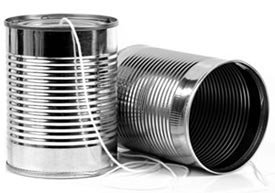 Introduction to Telecommunications provides students with the fundamental background knowledge in the theory, mediums of transmission, topologies and functions of systems used in businesses and Smart Homes. Students assemble, test and troubleshoot audio, visual, IR, wired and wireless connectivity systems to explore these principles.
Introduction to Telecommunications provides students with the fundamental background knowledge in the theory, mediums of transmission, topologies and functions of systems used in businesses and Smart Homes. Students assemble, test and troubleshoot audio, visual, IR, wired and wireless connectivity systems to explore these principles. During this 40-Hour course students are also familiarized with on the job safety procedures to ensure personal protection and protection of networking devices. Upon successful completion of this program students are eligible for certification.
Students apply their knowledge by using C-Tech's Interactive Telecommunications Board (ITB). This innovative teaching aid contains simulated 4-pair data systems, coaxial cable systems, and a fiber optic system all in one compact mobile unit.
Students use electronic testing equipment in conjunction with the ITB and then go on to:
- Test and verify the operation of connectivity systems
- Develop block diagrams to represent systems connectivity
- Perform a "Tone and Trace" on a copper cabling system
- Perform an optical continuity test on an optic system
- Troubleshoot a malfunctioning system
Technology Learning Activities throughout the text provide opportunities for students to couple their knowledge with creativity in solving communications problems drawn from real-world scenarios.
Throughout the program, system integration, operation, problem-solving and analysis are emphasized, along with the ability to relate real devices to the concrete realities they depict.


 In ancient times, the most common way of producing a signal would be through light (fires) and sound (drums and horns). However, those kinds communications were insecure and certainly left room to improvement as they did not permit message encryption nor a fast transmission of information on a large scale.
In ancient times, the most common way of producing a signal would be through light (fires) and sound (drums and horns). However, those kinds communications were insecure and certainly left room to improvement as they did not permit message encryption nor a fast transmission of information on a large scale.

